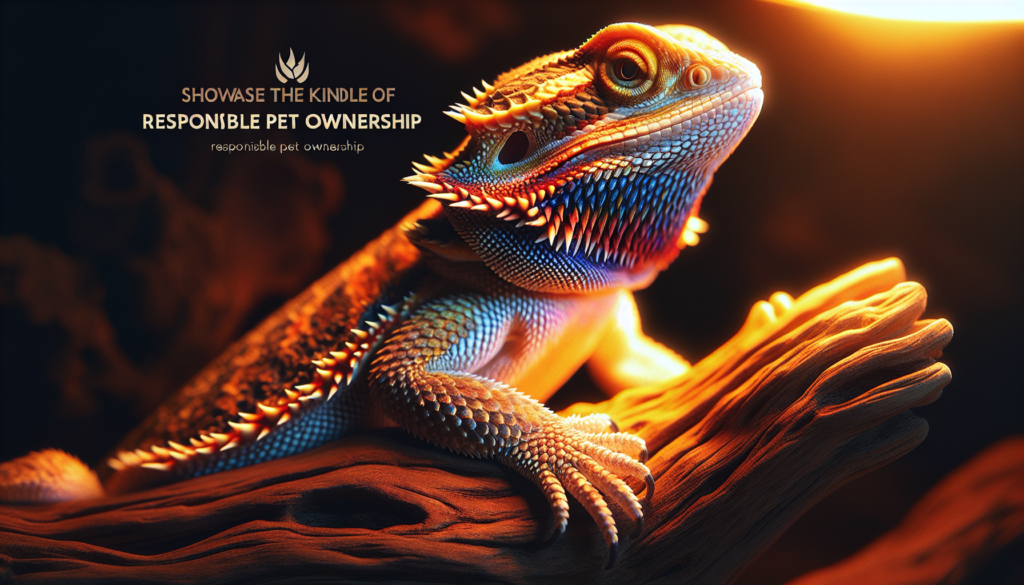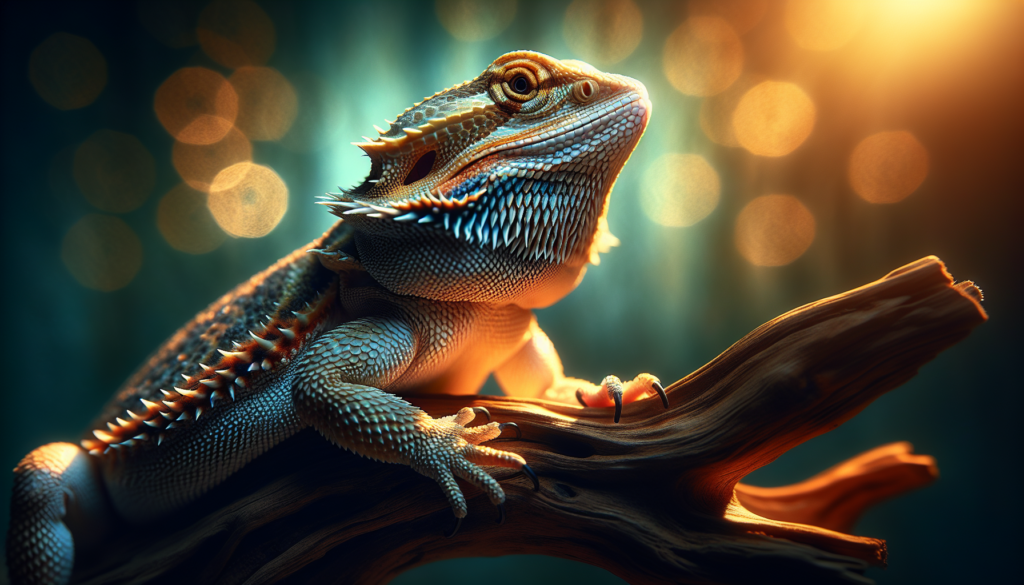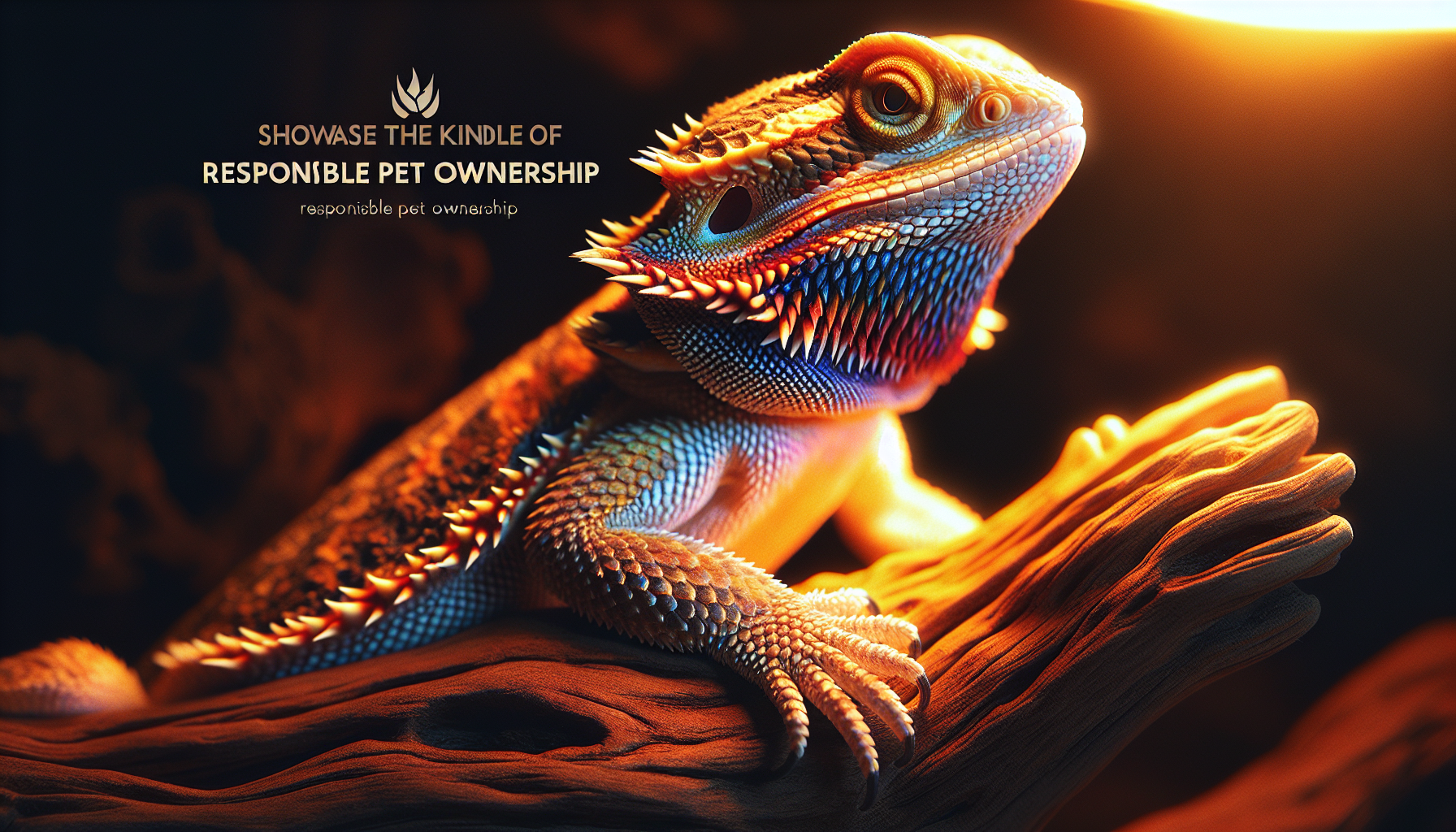So, you’ve been considering getting a bearded dragon as a pet, but you’re wondering: is it hard to keep one alive? Well, let me put your mind at ease. While there are certainly some specific care requirements to keep in mind, overall, bearded dragons are quite resilient and approachable creatures. With a little bit of knowledge and effort, you’ll find that these fascinating reptiles can make for fantastic companions. In this article, we’ll explore the ins and outs of bearded dragon care, giving you all the information you need to ensure your scaly friend thrives in their new environment. So, let’s get started and discover just how rewarding the journey of keeping a bearded dragon alive can be!
Basic Care Requirements
Bearded dragons are amazing and unique pets that require specific care to thrive in captivity. By understanding their basic care requirements, you can create a healthy and happy environment for your bearded dragon.
Habitat Setup
Creating an appropriate habitat setup is essential for the well-being of your bearded dragon. A spacious enclosure with adequate warmth, lighting, and hiding spots allows them to exhibit their natural behaviors.
Temperature and Lighting
Maintaining proper temperature and lighting is crucial for the overall health of your bearded dragon. Providing a basking spot with a temperature range of 95-105°F (35-40°C) and UVB lighting helps in digestion, calcium absorption, and vitamin D synthesis.
Feeding
Bearded dragons are omnivorous and require a varied diet to ensure optimal nutrition. A combination of live insects, such as crickets or roaches, along with fresh fruits, vegetables, and leafy greens, should be offered for a well-balanced diet.
Hydration
While bearded dragons primarily obtain moisture from their food, providing a water bowl is essential for proper hydration. Additionally, misting or bathing your bearded dragon can help them stay hydrated and aid in shedding.
Handling and Socialization
Proper handling and socialization are important aspects of bearded dragon care. Handle your dragon gently and regularly to build trust and establish a bond. However, keep in mind that each dragon has its own personality, so it’s important to recognize their comfort levels and minimize stress.
Factors Affecting Bearded Dragon Health
Various factors can impact the health of your bearded dragon. Understanding these factors will help you provide appropriate care and address any potential issues.
Age and Life Stage
Different life stages of a bearded dragon, such as juvenile, adult, and elderly, have specific care requirements. They may need different diets, enclosure sizes, and temperature gradients to support their growth and maintain optimal health.
Genetics and Breeding
Genetics play a crucial role in bearded dragon health. Certain genetic health issues can affect their well-being, making it necessary to be cautious when selecting breeding pairs. Responsible breeding practices can help minimize the risk of passing on hereditary conditions.
Nutrition and Diet
A balanced and nutritious diet is key to a bearded dragon’s health. Providing appropriate calcium-to-phosphorus ratios, gut loading insects before feeding, and dusting with vitamin supplements ensures they receive the necessary nutrients.
Disease and Illness
Bearded dragons can be susceptible to various diseases and illnesses, such as respiratory infections, metabolic bone disease, parasites, and skin issues. Regular veterinary check-ups, proper hygiene, and maintaining optimal living conditions can help prevent and manage these conditions.
Environmental Factors
Environmental factors, including temperature, humidity, lighting, and exposure to toxic substances or plants, can impact your bearded dragon’s health. Maintaining suitable environmental conditions and avoiding stressful situations is vital for their overall well-being.

Habitat Setup
Creating the right habitat setup is essential to provide a comfortable and stimulating environment for your bearded dragon.
Enclosure Size
Bearded dragons require adequate space to move around and exhibit natural behaviors. A minimum enclosure size of 40 gallons for juveniles and 75 gallons for adults is recommended to accommodate their growth.
Substrate
Choosing the right substrate is important for both hygiene and safety. Options such as reptile carpet, ceramic tiles, or non-toxic sand can be used, but it’s crucial to avoid loose substrates that can cause impaction if ingested.
Decorations and Hiding Spots
Bearded dragons enjoy exploring their environment and benefit from having various decorations and hiding spots. Providing rocks, branches, and artificial plants allows them to climb, bask, and feel secure in their enclosure.
Cleanliness and Hygiene
Maintaining a clean and hygienic enclosure is vital for preventing the growth of bacteria and parasites. Regular spot cleaning, substrate changing, and disinfecting items and surfaces within the enclosure ensure a healthy living environment.
Temperature and Lighting
Proper temperature and lighting are essential for a bearded dragon’s physiological processes and overall well-being.
Basking Spot
The basking spot is where your bearded dragon can raise its body temperature and properly digest its food. Providing a heat source, such as a heat lamp or ceramic heat emitter, in one area of the enclosure creates a basking spot with a temperature range of 95-105°F (35-40°C).
UVB Lighting
UVB lighting is crucial for bearded dragons as it helps them synthesize vitamin D3, which is necessary for calcium absorption and proper bone development. Full-spectrum UVB bulbs should be used and replaced every 6-12 months to ensure their effectiveness.
Thermal Gradients
Maintaining a thermal gradient within the enclosure allows your bearded dragon to thermoregulate and move between cooler and warmer areas as needed. This gradient is achieved by placing the basking spot at one end of the enclosure and providing cooler areas at the opposite end.
Nighttime Temperature
Bearded dragons require a drop in temperature during the nighttime to mimic their natural environment. Providing a cooler area with a temperature range of 70-75°F (21-24°C) allows them to have a restful sleep.

Feeding
A well-balanced diet is crucial to ensure the optimal health and growth of your bearded dragon.
Choosing the Right Diet
Bearded dragons are omnivorous and require a diet that includes both live insects and plant matter. Feeder insects such as crickets, roaches, mealworms, and phoenix worms should be offered along with fresh vegetables, fruits, and leafy greens.
Feeding Schedule
Young bearded dragons require more frequent feedings, usually two to three times a day, while adults can be fed once a day. A consistent feeding schedule ensures their nutritional needs are met, while monitoring their appetite and adjusting portion sizes accordingly is important.
Gut Loading and Dusting
Gut loading insects before feeding them to your dragon helps enhance their nutritional value. Feeding the insects with nutritious fruits, vegetables, or commercially available gut loading products ensures your dragon receives the essential nutrients. Dusting the feeder insects with a reptile-specific vitamin and calcium supplement aids in maintaining optimal health.
Vegetables and Fruits
Offering a variety of vegetables and fruits is important to provide essential vitamins and minerals. Dark leafy greens like kale, collard greens, and mustard greens are excellent choices, and fruits like berries and melons can be provided as occasional treats.
Hydration
Proper hydration is important for the overall health and well-being of your bearded dragon.
Water Bowl
Providing a shallow water bowl allows your bearded dragon to drink if they prefer. However, these lizards primarily obtain moisture from their food, so it’s important to monitor their hydration levels and ensure the bowl is clean and accessible.
Misting or Bathing
Misting or bathing your bearded dragon can provide additional hydration and can be especially helpful during shedding. Misting the enclosure with warm water or offering a shallow bath can encourage them to drink or absorb moisture through their skin.
Preventing Dehydration
To prevent dehydration, ensure your bearded dragon has access to fresh water and maintain appropriate humidity levels within their enclosure. Monitoring their skin elasticity and urate color can also help indicate hydration levels.
Recognizing Signs of Dehydration
Signs of dehydration in bearded dragons include wrinkled skin, sunken eyes, loss of appetite, and lethargy. If you notice these signs, it’s important to address the issue promptly by offering water, adjusting humidity levels, or seeking veterinary care if necessary.
Handling and Socialization
Proper handling and socialization are important aspects of bonding with your bearded dragon and ensuring their well-being.
Proper Handling Techniques
When handling your bearded dragon, it’s essential to support their body and be gentle to avoid causing them stress or discomfort. Always approach from the side or beneath and avoid sudden movements. Wash your hands before and after handling to prevent the transmission of potential pathogens.
Bonding and Trust
Spending regular, quality time with your dragon can help build a bond and trust between you. Allow them to explore your hand, offer treats, and speak to them in a soothing voice. Each dragon has its own personality, so respect their boundaries and work at their pace.
Minimizing Stress
Bearded dragons are sensitive to stress, which can negatively impact their overall health. Minimize stress by providing a secure and quiet environment, avoiding sudden loud noises, and limiting their exposure to unfamiliar or stressful situations.
Recognizing Warning Signs
Be aware of warning signs that indicate your bearded dragon is feeling stressed or uncomfortable. These can include aggression, puffing up their beard, hissing, or attempting to escape. Responding appropriately and removing them from the stressful situation can help alleviate their discomfort.
Age and Life Stage
Different life stages of a bearded dragon require specific care considerations to ensure their well-being.
Juvenile Bearded Dragons
Juvenile bearded dragons are still growing and have high energy levels. They require smaller prey and more frequent feedings to support their development. Their enclosure should have appropriate basking and hiding spots, and calcium supplementation is particularly important during this stage.
Adult Bearded Dragons
Adult bearded dragons have different dietary needs compared to juveniles. Their enclosure should be larger to accommodate their size, and proper UVB lighting is essential for calcium metabolism and overall health. Regular veterinary check-ups and monitoring of their weight and appetite are important during this stage.
Elderly Bearded Dragons
As bearded dragons age, they may experience reduced mobility and require adjustments to their enclosure and diet. Providing softer food options and ensuring they have easy access to water and basking spots are important considerations. Regular veterinary check-ups and monitoring for age-related issues are crucial for their well-being.
Special Considerations
Bearded dragons with special needs or health conditions require additional care and attention. Specific dietary adjustments, medical treatments, or environmental modifications may be necessary. Working closely with a reptile-savvy veterinarian is important to address their individual needs.
Genetics and Breeding
Understanding the genetic aspects of bearded dragons is essential for responsible breeding practices and promoting overall health.
Genetic Health Issues
Certain genetic health issues, such as hypo/hyper pigmentation, neurological disorders, or metabolic disorders, can be present in bearded dragon populations. It’s important to be aware of these potential issues and ensure breeding pairs are selected carefully to minimize their occurrence.
Responsible Breeding Practices
Responsible breeding involves considering the health, genetic diversity, and well-being of both the parent dragons and their offspring. Breeding should only be undertaken by experienced breeders who have proper knowledge and resources to provide appropriate care and find suitable homes for the offspring.
Mating, Egg Laying, and Incubation
Mating and egg-laying involve specific behaviors and environmental conditions. Providing appropriate nesting boxes, temperature gradients, and monitoring female dragons for signs of pregnancy and egg development is crucial. Incubating eggs at the right temperature and humidity ensures successful hatching.
Caring for Baby Bearded Dragons
Baby bearded dragons require proper nutrition, the right temperature gradients, and a suitable enclosure size. Their diet should consist of small feeder insects, and calcium supplementation is vital for their growth and bone development. Regular veterinary check-ups and monitoring their overall well-being are important in this developmental stage.
Environmental Factors
Environmental factors play a significant role in the health and well-being of bearded dragons. Creating a suitable and stress-free environment is essential for their overall health.
Temperature and Humidity
Maintaining appropriate temperature and humidity levels in the enclosure is vital for bearded dragon health. Providing a basking spot with the right temperature and ensuring proper humidity levels help support their physiological processes and prevent stress-related health issues.
Lighting and Photoperiod
Bearded dragons require a proper photoperiod to establish natural day and night cycles. Providing a consistent light/dark schedule helps regulate their biological processes. Full-spectrum UVB lighting is necessary for proper calcium metabolism and vitamin D synthesis.
Toxic Substances and Plants
Bearded dragons are vulnerable to toxic substances and plants. It’s crucial to ensure their enclosure is free from any potentially harmful items or plants. Researching safe substrates and avoiding chemicals and pesticides in their environment is essential to prevent accidental poisoning.
Avoiding Stressful Situations
Stress can have a negative impact on a bearded dragon’s health. Avoid stressful situations, such as sudden loud noises, frequent handling by unfamiliar people, or housing multiple dragons together, as it can lead to aggression, loss of appetite, and compromised immune function.
By understanding and implementing these comprehensive care requirements, you can ensure that your bearded dragon thrives and lives a long and healthy life. Remember, every bearded dragon is unique, so it’s important to pay attention to their individual needs and provide them with the care and attention they deserve. With proper care, you can create a loving and enriching environment that fosters the well-being of your scaly companion.
